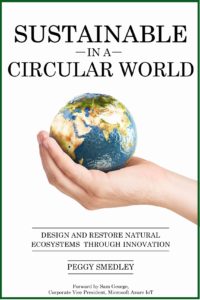The last two weeks on The Peggy Smedley Show, I had an opportunity to sit down with Sheila Hollis, acting executive director, United States Energy Assn., to discuss the energy crisis in the United States and across the globe—and I learned quite a bit about the challenges we face with energy and what ultimately needs to happen.
Journey back with me for a minute to the 1920s, when the Federal Power Act came into being. As Hollis told me, it is a service invested with the public interest. “The public is what it is all about,” she explains. “When you built hydroelectric dams in the 1920s, ‘30s, and ‘40s, you were thinking about the people. People desperately needed power.” We all can understand that need and what the objective was all about.
Since that time, in the United States, we have grown. Our communities have developed and our desire and need for electric power has grown too, she explains.
“The need for energy is as clear as bell,” Hollis says. “It is a question of how we can deal with our need for energy in a way which takes serious account of climatological impacts of those choices and reduces the climatological impact by as much as possible by realizing that we need these sources of energy.”
Today, there are a number of hurdles to overcome: population booming and other increasing demands; cybersecurity and security of all the energy systems we do have; CO2 and trying to reduce it in the best way we can with the circumstances we have; power outages; the shutting down of nuclear plants, which do not emit CO2, because they are aging out; and constantly changing administrations, just to name a few.
“In the U.S., because it is a democracy, we have these multiple layers of players, all well intended, but trying to bring it all together is a tremendous challenge,” she explains. “When (Vladimir) Putin says build a pipeline, by God, the pipeline gets built. Period. End of story. There is no argument.”
Hollis suggests the solution comes in the form of the best minds coming together at a table and setting aside their emotions and their personal investments. We, as a country, need to make the decision to stick with a plan and not switch it on and off.
Of course, the energy crisis extends far beyond the United States. Roughly 30% of the world has no energy supply, other than the most basic.
“It is heartbreaking in many parts of the world still. If you look to India, where the temperatures are 104-114 many days and air conditioning does not exist, those are the things we are trying to address. It is (the) same in parts of Southeast Asia,” she says. “They have a tremendous amount of hydropower in Uganda, but still 70% of the people don’t have electricity because they don’t have the transmission lines to move the massive amount of hydropower.”
This is the reason why the U.S. Energy Assn., works hand-in-hand with the U.S. government to enhance and provide energy throughout the world, to improve systems, to improve training, and to clean up in desperately needed situations. Enough cannot be said about the need to address the energy crisis.
Want to tweet about this article? Use hashtags #IoT #sustainability #AI #5G #cloud #edge #futureofwork #digitaltransformation #green #ecosystem #environmental #circularworld #energy


